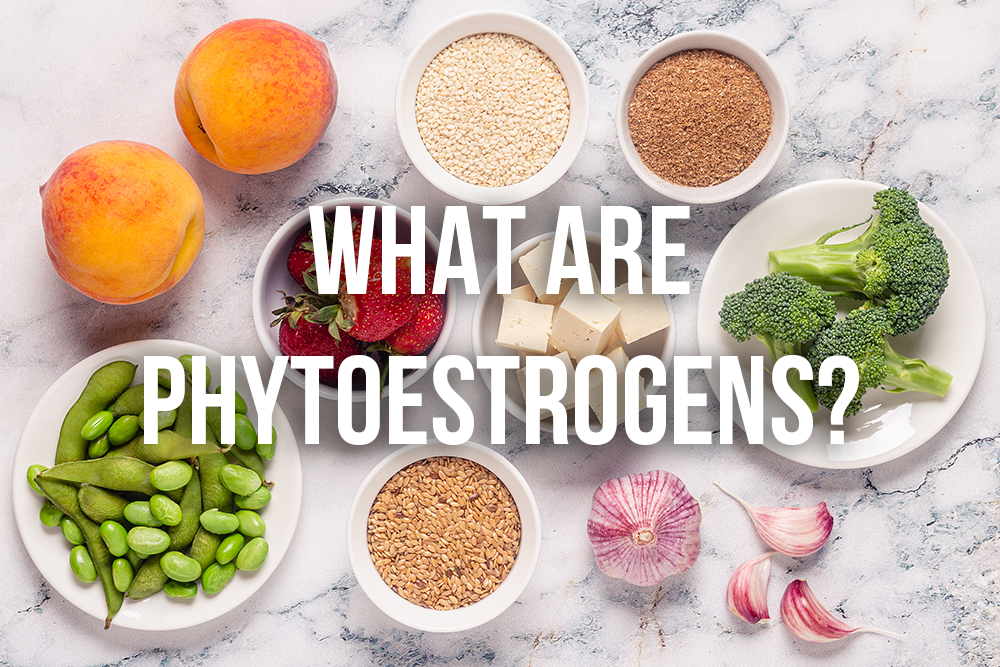Stay Cool, Calm and Add Phytoestrogens.

Menopause nutrition got you hot and bothered?
Have you heard about Phytoestrogens?
Phytoestrogens are simply compounds found naturally in some plants that function in a similar way to human or animal oestrogens. You can find these in various food groups, such as multiple fruits, vegetables, legumes, and grains. If you have a plant-based or plant-heavy diet, a lot of the food you may be eating will be very rich in phytoestrogens.
So what is so special about them?
When we consume phytoestrogens, our bodies respond like they would to the natural oestrogen hormone our bodies produce. This is because they mimic your body's oestrogen and are believed to perform similar functions, resulting in numerous benefits
This is useful to those of us going through perimenopause and menopause, when our natural levels of oestrogen drop, and to a limited extent could act as a type of natural hormone replacement therapy.
Phytoestrogens could help to naturally aid the symptoms of perimenopause and menopause with one of the biggest being relief from those dreaded hot flashes.
A 2014 study by Drs M-n. Chen, C-c Lin & C-f. Liu in the ‘Efficacy of Phytoestrogens for Menopausal Symptoms’ found that the use of 'Phytoestrogens was associated with a reduction in the frequency of hot flashes.'
Another 2016 study by Drs Oscar H Franco and Rajiv Chowdhury on the ‘Use of plant-based therapies and menopausal symptoms’ also supported a reduction in the frequency of hot flashes and additionally vaginal dryness with specific supplementation of Phytoestrogens’.
What other health benefits are there?
Because of the way phytoestrogens mimic our body’s natural oestrogen, they could also help with other conditions caused by hormonal imbalances, for example:
Osteoporosis- helping to maintain normal bone density in ageing women by naturally increasing oestrogen levels.
Menstrual relief- helping to balance changes in oestrogen levels during certain times of the menstrual cycle that can cause uncomfortable symptoms.
Vaginal Dryness- As shown in the study above, some women also showed improvements in vaginal dryness after supplementing their diet with Phytoestrogens. This can have a huge effect on things like sex drive.
So what foods are sources of Phytoestrogens?
Here are some favourite foods that are high in phytoestrogens, that are easy to include in your diet. You can even fit them around your CollaSlim meal plan…
Soya Products
Soya products, such as soy milk or Tofu are one of the biggest Phytoestrogen rich foods. Try swapping out your usual milk for low-calorie soy milk to give your CollaSlim a boost. Tofu could also be an easy alternative to the meat in your meals.
Chickpeas
Chickpeas are another Phytoestrogen-rich food that you can easily add to your diet. Packed with lots of nutrients, vitamins and minerals. Chickpeas make a great swap to your carb portion, pasta or even meat in a curry.
Linseeds
At just 37 Calories per tablespoon, Linseeds are a great way to add some Phytoestrogens to your shakes, soups, porridge or yoghurt. Try blending some up in your CollaSlim Shake, or scatter on salads for some extra crunch.
Lentils
The versatile lentil is a delicious addition to your diet, packed full of protein and fibre, good for digestive health, lowering cholesterol, stabilising blood sugar levels, and are high in isoflavones and Phytoestrogens. We love them in a hearty soup or made into a burger.
Sesame Seeds
Another favourite that is easy to add to your meals, sesame seeds are a potent source of Phytoestrogen that also contains plenty of fibre. We love scattering some on Asian dishes like stir-fries for a nutty flavour and to add texture.
Dried Fruits
The most popular Phytoestrogen snack at So Body Co HQ. Dried fruits such as dates, prunes and dried apricots are not only chock full of vitamins, fibres and anti-oxidants but also have high levels of phytoestrogen content. Perfect for elevenses or topped on Greek yoghurt for breakfast.
Adding some of the above Phytoestrogens into your meals could help to alleviate menopause symptoms such as hot flashes, as well as simple and tasty alternatives to mix up your mealtimes.
Whilst these are not a replacement for things like hormone replacement therapy (HRT) that traditionally treat menopause symptoms, including them in your diet could help to manage or reduce symptoms experienced by perimenopausal to postmenopausal women.
Additionally, there are countless added benefits of having a wider variety of foods in your diet that support your body's changes, giving you the nutrition you need to tackle your menopause experience as your coolest self.
References:
Healthline- Phytoestrogens
Heathline- 11 foods high in phytoestrogens
M-n. Chen, C-c. Lin & C-f. Liu (2015) Efficacy of phytoestrogens for menopausal symptoms: a meta-analysis and systematic review, Climacteric, 18:2, 260-269, DOI: 10.3109/13697137.2014.966241
Franco OH, Chowdhury R, Troup J, et al. Use of Plant-Based Therapies and Menopausal Symptoms: A Systematic Review and Meta-analysis. JAMA. 2016;315(23):2554–2563. doi:10.1001/jama.2016.8012